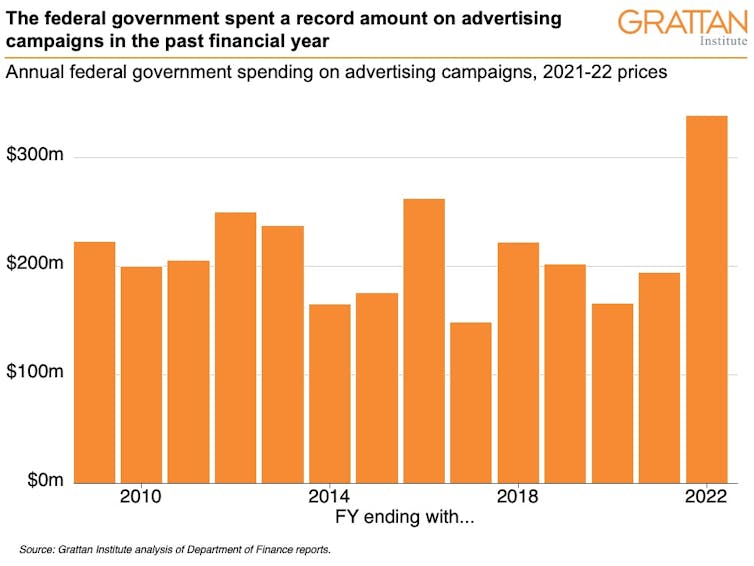The Morrison government spent a record amount on taxpayer-funded advertising, new data reveal
- Written by Kate Griffiths, Deputy Program Director, Grattan Institute

The federal government is a big spender in the advertising world, regularly spending more than major companies such as McDonald’s, Telstra and Coles. New data released on Friday by the Department of Finance[1] shows that in the lead-up to the May 2022 election, the Coalition government’s advertising spend skyrocketed yet again.
The past financial year was the biggest year on record for taxpayer-funded advertising. The previous federal government spent A$339 million on taxpayer-funded advertising campaigns in 2021-22, well above the 25-year average[2] of about $200 million a year.
In the first six months of 2022, the previous government was the biggest advertising spender[3] in the country.













